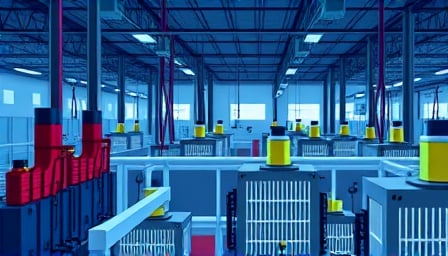STMicroelectronics NV: A Turning Point or a False Dawn?
STMicroelectronics NV has seen its stock price skyrocket in recent days, fueled by positive earnings reports that have left analysts scrambling to raise their price targets. Deutsche Bank and TD Cowen have both taken the plunge, with Deutsche Bank setting a target of EUR 26, a staggering increase from previous estimates. But is this a sign of genuine growth, or a fleeting moment of optimism in an otherwise turbulent market?
The company’s Q1 earnings report was a mixed bag, with revenue declining significantly from the same period last year. However, analysts are convinced that the company is finally hitting rock bottom, and that the worst is behind them. The stock price has gapped up, a clear indication that investors are buying into the narrative of a turnaround. But can this optimism be sustained, or is it just a case of wishful thinking?
The risks are very real. Political conflicts and market downturns pose a significant threat to the company’s future prospects. The global semiconductor market is highly volatile, and any misstep could send the company’s stock price plummeting. Moreover, the company’s decline in revenue is a clear indication that it has yet to find its footing in a rapidly changing market.
So, is STMicroelectronics NV a buy or a sell? The answer is far from clear. While the company’s positive earnings report has sparked optimism, it is essential to separate the signal from the noise. The company’s decline in revenue and the risks posed by market downturns and political conflicts cannot be ignored. As investors, we must be cautious and not get caught up in the hype. The question is, will the company’s stock price continue to rise, or will it come crashing back down to earth?
Key Takeaways:
- STMicroelectronics NV’s stock price has increased following positive earnings reports
- Deutsche Bank and TD Cowen have raised their price targets for the company
- The company’s Q1 earnings report showed a significant decline in revenue
- Analysts believe the company is bottoming out, but risks remain
- Political conflicts and market downturns pose a significant threat to the company’s future prospects
